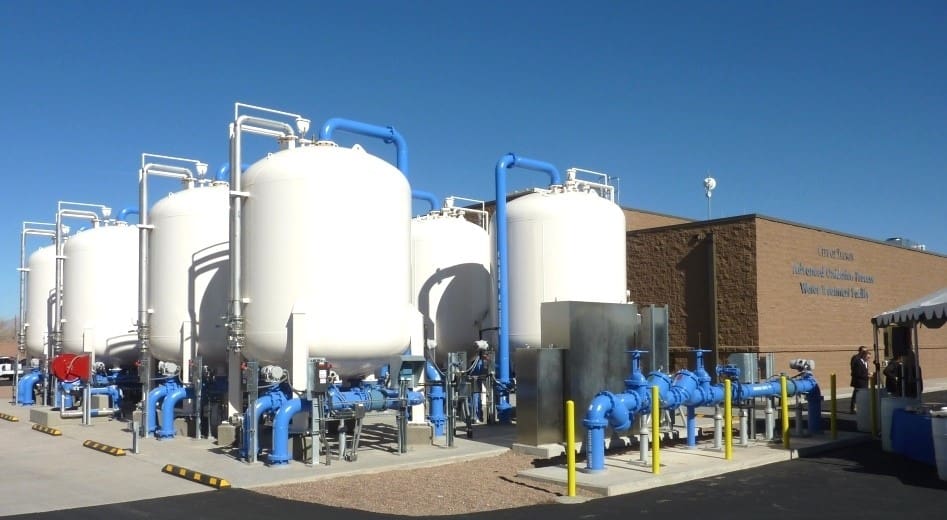Innovative PFAS Treatment Solutions for Safer Water
The enhancing prevalence of PFAS contamination in water supplies necessitates a crucial evaluation of cutting-edge therapy services. Advanced purification technologies and novel chemical treatments present appealing opportunities for minimizing these relentless toxins. In addition, emerging bioremediation techniques offer an even more lasting technique to dealing with PFAS obstacles. As regulative structures proceed to adjust, comprehending the efficiency and scalability of these remedies comes to be paramount. What effects do these improvements hold for public health and environmental repair, and exactly how can stakeholders efficiently implement them in varied contexts?
Summary of PFAS Contamination
PFAS contamination has become a considerable ecological and public wellness problem. Per- and polyfluoroalkyl materials (PFAS) are a group of artificial chemicals recognized for their determination in the environment and body, leading them to be typically referred to as "for life chemicals." These substances have actually been widely used in different sectors, consisting of firefighting foams, water-repellent textiles, and food packaging, mostly due to their water- and grease-resistant residential properties.
The extensive use PFAS has resulted in their detection in soil, water supplies, and even in the blood of humans and animals. Studies have connected PFAS direct exposure to various wellness issues, including developing impacts in infants, immune system disorder, and different forms of cancer. Additionally, the ecological perseverance of these substances complicates their degradation and elimination, raising concerns regarding long-lasting environmental impacts.
Regulative bodies are increasingly carrying out rigorous standards to check and minimize PFAS degrees in drinking water and various other environmental tools. As awareness of PFAS contamination expands, it has ended up being necessary for areas and industries to look for effective therapy options to reduce direct exposure and guard public health and wellness.
Advanced Purification Technologies
As the seriousness to resolve PFAS contamination escalates, advanced filtration modern technologies have actually become a pivotal element in the removal efforts intended at eliminating these consistent chemicals from water sources. These technologies leverage sophisticated mechanisms to successfully target and record PFAS substances, which are notoriously immune to conventional therapy approaches.
One of the most promising methods is using granular triggered carbon (GAC), which adsorbs PFAS particles due to its high surface area and porous structure. This method has actually been commonly applied in both municipal and commercial settings, demonstrating significant decreases in PFAS focus. Additionally, ion exchange resins have actually acquired traction, specifically made to selectively bind PFAS ions from water, therefore facilitating their elimination.
Membrane filtration modern technologies, such as reverse osmosis and nanofiltration, additionally reveal efficacy in PFAS removal by physically dividing contaminants from water - pfas management. These systems can attain high degrees of pureness, making them ideal for drinking water applications
Chemical Treatment Developments
Various chemical treatment innovations are being discovered to efficiently deal with PFAS contamination in water products. One appealing strategy involves using innovative oxidation procedures (AOPs), which make use of powerful oxidants such as ozone, hydrogen peroxide, or chlorine dioxide integrated with UV light to break down PFAS compounds into much less damaging compounds. This technique has shown efficiency in laboratory settings, revealing prospective for scalability in real-world applications.
One more ingenious method is the development of ion-exchange resins especially see here developed to target PFAS. These resins can selectively adsorb PFAS compounds from water, permitting their elimination throughout therapy processes. Current innovations have boosted the performance and ability of these resins, making them a desirable choice for water treatment facilities.
In addition, scientists are examining the use of chemical representatives like persulfate and ferrous ions to enhance the destruction of PFAS in polluted water. These agents can induce chain reaction that facilitate the failure of relentless PFAS substances.
Emerging Bioremediation Strategies
Recent advancements in chemical treatment innovations have actually led the method for checking out bioremediation strategies as a practical option for resolving PFAS contamination. Bioremediation utilizes the all-natural metabolic procedures of bacteria to deteriorate or change toxins, making it an appealing technique for tackling consistent contaminants like PFAS.
Arising techniques in bioremediation consist of making use of genetically crafted microbes that can specifically target and break down PFAS substances. These microbial stress are being developed for their enhanced deterioration capacities, enhancing the performance of the removal process. Furthermore, researchers are examining the possibility of plant-assisted bioremediation, where specific plant varieties may uptake and withdraw PFAS from polluted dirt and water.
One more encouraging strategy is the application of bioaugmentation, which includes presenting helpful microorganisms right into polluted environments to increase the deterioration of PFAS. This method can facilitate faster removal timelines and boost overall efficiency.

Governing Structures and Requirements
A detailed governing framework is necessary for successfully managing PFAS contamination and making sure public health and wellness defense. The increasing recognition of per- and polyfluoroalkyl materials (PFAS) as environmental pollutants has actually triggered various federal and state agencies to develop requirements that control their visibility in water products. The U.S. Epa (EPA) has actually established wellness advisories and is functioning towards establishing enforceable limitations for PFAS in drinking water.
State-level laws vary substantially, with some states adopting more stringent standards than those proposed by the EPA. These laws usually consist of optimum pollutant levels (MCLs) for certain PFAS compounds, surveillance needs, and try these out reporting obligations for water utilities. Additionally, arising frameworks concentrate on the removal of infected websites, highlighting the need for efficient therapy modern technologies.

Conclusion
To conclude, the growth and application of ingenious PFAS therapy options are important for resolving the prevalent problem of water contamination. Advanced filtering modern technologies, chemical therapies, and emerging bioremediation techniques jointly offer a complex strategy to effectively minimize and degrade PFAS degrees. As regulative structures continue to evolve, incorporating these modern technologies will be vital to guard public health and wellness and recover the integrity of polluted water sources, ultimately contributing to a cleaner and much safer environment.